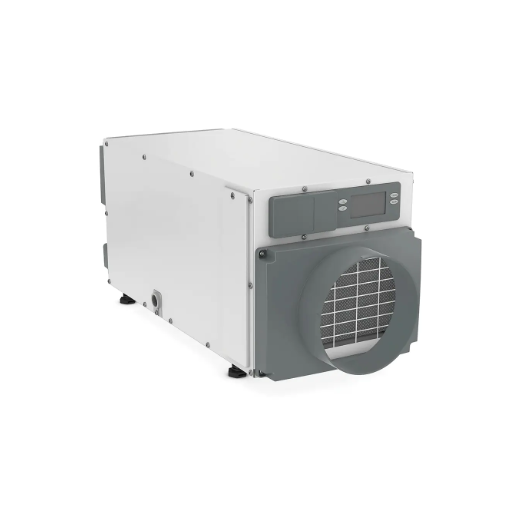Managing moisture levels in your crawl space is critical not only for maintaining structural integrity but also for ensuring a healthy indoor environment. Excess humidity in crawl spaces can lead to a host of problems, including mold growth, wood rot, and increased energy consumption. For commercial buildings or properties with expansive crawl spaces, investing in a reliable commercial dehumidifier is a game-changer. This guide dives into the necessity of dehumidification in crawl spaces, how commercial-grade solutions stand apart from residential options, and how the right system can protect your property while improving air quality. By the end of this article, you’ll understand why professional-grade dehumidification is an essential investment and how to select the best dehumidifier for your specific needs.
Understanding Crawl Space Dehumidifiers
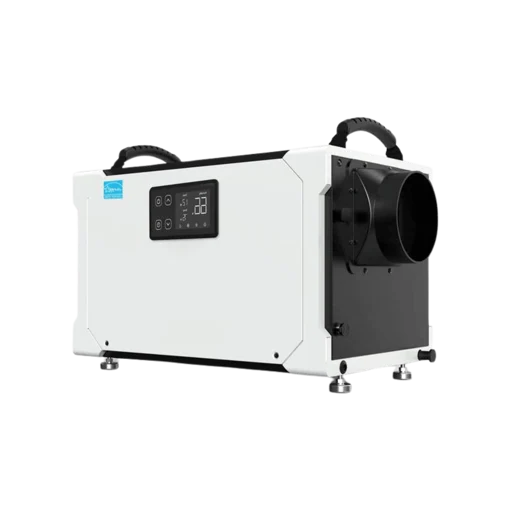
What is a Crawl Space Dehumidifier?
A crawl space dehumidifier is a special dehumidifying device created to extract excess moisture from the air and maintain adequate humidity in the crawl spaces. These are the very machines designed to function with maximum efficiency in low clearance areas, addressing the special problems of poor air circulation, limited dimensions, and high humidity so commonly found in these spaces. The dehumidifier thus helps to deter any detrimental consequences arising out of high moisture levels in the form of deterioration of the structure, formation of molds, and health hazards due to indoor air pollution.
In contrast to conventional dehumidifiers, crawl space dehumidifiers are made for conditions typical of below-floor environments. They are typically heavy-duty, compact, and energy-efficient dehumidifiers that are able to run in lower temperatures and high-humidity environments. Many models also boast a continuous drainage facility, built-in humidistat, and filters that promise uninterrupted operation with very little maintenance. These features set them apart from dehumidifiers meant for general applications and make them essential for a crawl space protection scheme in the long run.
The crawl space dehumidifier aids in keeping the relative humidity below 60%, thus limiting threats such as wood rot, infestation, and mold and mildew growth. This is especially important in instances where moisture compromise enters the crawl space via inadequate venting, seepage of ground water, or seasonal fluctuations. Owning a crawl space dehumidifier would help save your property from structural damage while aiding your house in having better air quality inside.
Importance of Dehumidification in Crawl Spaces
Dehumidifying the crawl space is a necessity if you want to maintain a healthy living environment. Raised moisture levels in crawl spaces can deform wooden supports, rust metal components, and cause foundation problems over time. Dehumidifiers soon go into action to lower the humidity and avert any costly damages from mounting on your structural integrity.
Also, high moisture levels may induce the growth of mold and mildew in crawl spaces, which eat away at materials and pose serious health hazards. The mold spores travel through the home, contaminating the air and aggravating allergies, asthma, or other respiratory issues. Proper dehumidification reduces mold chances, helping in the creation of good indoor air quality.
Finally, controlling humidity in crawl spaces keeps pesky critters away, like termites and rodents, which prefer places with high moisture. Two benefits: low moisture conditions deprecate the environment for pests while depriving them of infestation in your home. Crawl space dehumidification will definitely act in favor of providing a truly safe, comfortable, and healthy abode.
Common Issues in Crawl Spaces
Being an enclosed space, a crawl space is prone to picking up several problems in an often poorly maintained environment. One primary issue is of moisture, excess moisture arising from poor drainage, leaking pipes, or torrid levels of humidity. This moisture encourages mold to grow, which, adversely, influences the air quality of the house and, in the long run, damages the structure. Well behind the scratches of such things are surface improvements like laying vapor barriers, ventilating the crawl spaces properly, and running dehumidifiers so as to dent moisture problems.
Another one that mostly takes place is pest infestation. Crawl spaces will provide an ideal habitat for rodents, termites, and other types of pests because of their dark, damp, and out-of-the-way conditions. These pests could severely damage insulation, wood supports, wiring, and whatnot. To keep infestations at bay and deal with them when they appear, it is essential to have regular inspections, to seal all gaps and cracks, and to employ treatments for pests.
Lastly, improper insulation, especially in older houses, always plagues the existence of a crawl space. An ill-insulated space leads to energy inefficiency, hiking up your heating and cooling bills. Insulation will help keep a crawl space dry and warm. Modern insulation materials, when correctly installed, have the potential to greatly add to the energy efficiency of your home. Come to a decision today, and the sooner you handle these, the sooner you secure your crawl space while also adding to the structural stability and comfort of your property.
Types of Commercial Dehumidifiers
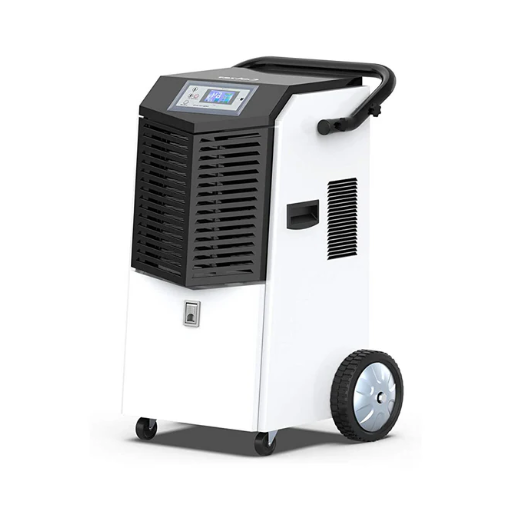
Overview of Commercial Dehumidifiers
Commercial dehumidifiers are high-capacity, high-powered machines to discharge more moisture from a very large space, with warehouses, industrial installations, office buildings, and commercial crawl spaces being just a few examples. These units maintain ideal relative humidity between 30% and 50%, preventing mold formation, corrosion, and structural damage. Commercial dehumidifiers work on a much larger volume of air and also operate continuously even during adverse conditions, unlike their residential counterparts.
The present-day commercial dehumidifiers come with powerful compressors and high airflow, usually ranging anywhere from 200 to over 1,000 cubic feet per minute (CFM). Advanced features in these units can also include digital humidity controls, built-in condensate pumps, and low-temperature operation for colder environments. Some units even include energy-efficient heat exchange designs to keep operating costs down, essential for any business trying to reduce energy costs. Even further evolving desiccant technology and refrigerant-free versions assure very efficient moisture removal in niche applications like chemical storage or server rooms, conveying the use cases of these machines.
While choosing commercial dehumidifiers, considerations such as the square footage under treatment, average humidity levels, and other operational conditions must be taken into account. Precision in sizing the unit guarantees that it works at peak performance and efficiency; an underperforming unit reduces climate control and uses more power, while an overly large one wastes money and may even hamper energy usage.
Features of Effective Commercial Dehumidifiers
Effective commercial dehumidifiers are designed with modern features to ensure peak performance and durability in harsh conditions. Features include high moisture removal capacity (measured in pints or liters per day) so that large areas with varying humidity levels are accepted. Usually, the units have a programmable humidistat with which one can set relative humidity precisely according to operational needs.
Further, efficient airflow, measured in cubic feet per minute (CFM), assures good circulating air that contributes to further humidity control. Some energy-efficient features are incorporated into some units, such as variable speed compressors or environmentally friendly refrigerants, so as to reduce operating cost while keeping up with regulatory standards. The automatic defrost system might be the key one, as it prevents the freezing of the coils at low temperatures, thereby keeping the dehumidifier running nonstop.
Some features go a step further for convenience, while ensuring the main functionality of the dehumidifier; thus, most modern commercial dehumidifiers now come with simple menus, remote monitoring via IoT, and stiff casters/handles for easy movement. In places where air quality is considered the top priority, these are offered with models having their air filtration units or additionally equipped with HEPA filter systems, so that these units serve the purpose of air purification in good measure.
Thus, commercial dehumidifiers achieve long-term reliability through corrosion-resistant materials, with provisions for continuous drainage system options for water discharge so that manual removal of water is unnecessary. This translates to the best commercial dehumidifiers becoming their place, without which it is nearly impossible to achieve controlled environments within industrial, healthcare, and storage-based settings.
Dehumidifiers with Pump and Drain Options
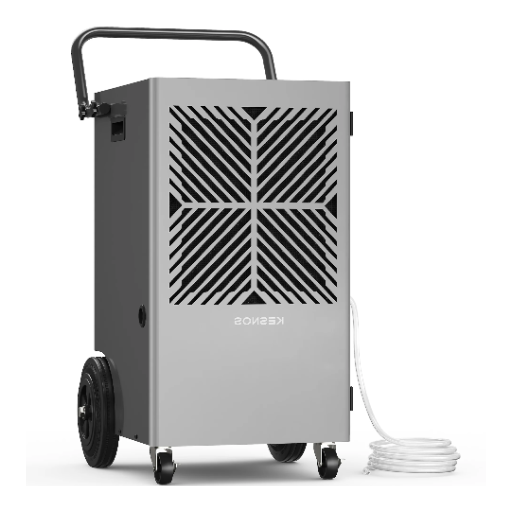
Benefits of Dehumidifiers with Pumps
Equipped with pumps, dehumidifiers feature a number of benefits that make them an excellent alternative to other applications. The following are five important benefits of disinfectant with pumps, along with key aspects about how it operates:
- Automatic Water Removal: The dehumidifier with an internal pump takes water and empties it from afar, such as into a sink or a drain. No need for manual water emptying. It is an important feature if the water system needs to operate continuously, such as in basements, industrial facilities, or large storage units.
- Greater Flexibility in Placement: The pumps would function well for dehumidifiers in an environment that does not work well with gravity-based drainage systems. A unit would be able to be placed just about anywhere using the water pumping feature, pumping water up and away as far as 15 feet away in many of the models. Hence, this would include installing it in areas with no floor drain nearby.
- Maximized Efficiency: This allows dehumidifiers that come with pumps to work around the clock, while those that require emptying would stand in operation until full, thereby greatly increasing efficiency. Constant operation is always preferred in areas such as hospitals, server rooms, and commercial storage sites where consistent humidity control is necessary.
- Good in High Humidity Situations: These types of dehumidifiers can work well in highly humid places, being able to move lots of water without frequent human intervention 50-pint-a-day unit, for instance, would maintain an optimal moisture level just perfectly by pumping all the water it collects.
- Less Maintenance and Labor Cost: The automation reduces monitoring and maintenance from the operators, therefore gradually lowering labor costs domestically over time. This makes it all the more attractive to industries that need simultaneous climate control all day long, like pharmaceutical companies or food storage.
Hence, the presence of the pump technology considerably increases the functionality of the dehumidifier, thus making it an indispensable element in both residential and industrial moisture control applications.
How to Choose the Right Pump and Drain Hose
When choosing the proper pump and drain hose for your dehumidifier, several important considerations must be analyzed to pursue efficiency and longevity. The first consideration should be the pump’s flow capacity, which should match the dehumidifier’s extraction rate. For example, a very high-capacity dehumidifier will require a pump capable of dealing with that volume without the risk of overflowing or draining too slowly.
Drain hose material qualities should be another big consideration. PVC or reinforced flexible hoses would be preferable for lessening the chances of wear, punctures, or even damage through long-term exposure to moisture. Also, it would be wise to choose the hose length that properly fits your drainage setup, especially when draining downhill to some elevated or distant point. Long-distance drains would probably need a pump with a higher lift capacity in order to discharge efficiently.
Another thing to put into consideration is whether the pump works well with your system and will be easy to install. Many modern systems are set up to work seamlessly with proprietary pumps, but any third-party product should conform to the manufacturer’s specs, or your system may not work efficiently. Also, look for models that have backflow preventers and automatic shut-off valves to guard against accidental flooding.
Lastly, safety and environmental certifications such as UL or CE markings are useful for adding another layer of confidence regarding the reliability of that product. Therefore, with the above analysis, one would be able to achieve an optimized setup that minimizes hazards in operation while maximizing the performance of the dehumidifier.
Installation Considerations for Pump and Drain Systems
The proper installation of pump and drain systems is crucial in ensuring the efficient operation of dehumidifiers and other water-handling equipment. First, pump capacity must be checked to ensure that it fits the expected rate of water output from the system. Pump with a flow rate or head capacity that is below the requirement will surely create a backup and hinder operation. For regular dehumidifiers, the pump should, in general, be capable of dealing with about 20-50 gallons/day, depending on the pump capacity and runtime furnished by the equipment.
The layout of the drainage line must also be carefully planned so as to minimize clog risks, which guarantee the pressure-free discharge of water. In the event gravity can be used as the force to facilitate flow, then the drain lines must be given a ready slope of at least 1/4 inch per foot; at any point, water stagnation must be avoided. Restriction of drainage hoses through abrupt bends and kinks must be avoided so as not to create future points of failure due to flow constriction. Proper fixing of lines will prevent movement during operation, while the use of PVC or reinforced tubing will guarantee durability against wear or accidental compression.
For maximum performance, a condensate trap installed on the drain shall prevent air backflow, which could affect the pressure in the dehumidifier system. The correct use of anti-microbial-treated materials in the drain lines further ensures less fungal or bacterial growth in the long term. Also, considering the placement nearby will avoid unnecessary energy consumption, and maintainability will be easier.
It is necessary to conduct regular testing and inspection of the system before leaks or blockages become failures. The deployment of an electronic monitoring system or one with alarms can offer diagnoses with a time stamp and proactive notifications to the users. Thus, combining all measures in installation, together with the adherence to the manufacturer’s instructions, shall serve to guarantee not only compliance with safety regulations but also enhance equipment reliability and longevity.
Capacity and Performance Metrics
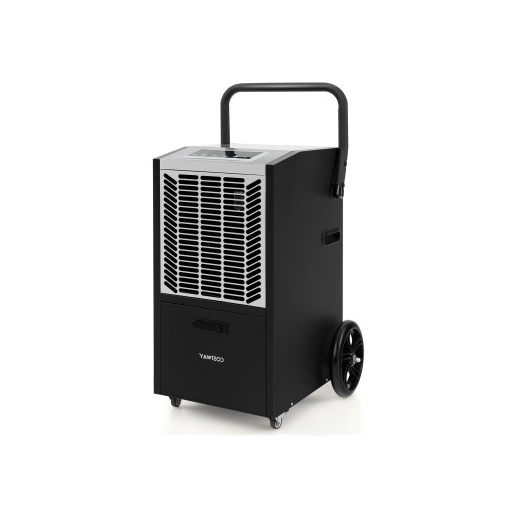
Understanding PPD Ratings: 180 PPD Explained
PPD stands for “pints per day,” referring to the dehumidifier capacity in terms of how much moisture it can extract from the air in 24 hours, given standardized conditions. The rating of 180 PPD means this device will be able to take out up to 180 pints of water per day.
Areas that require aggressive moisture control use high-capacity dehumidifiers rated for 180 PPD, namely industrial plants, warehouses, restoration, and construction works. At this rating, this equipment is engineered to handle heavy moisture loads, lowering the humidity as fast and as efficiently as possible to prevent the growth of mold, deterioration of structures, and complications to air quality.
This includes a bunch of additional and possibly new features on top of some basic workings: New, modern dehumidifiers rated at 180 PPD will usually feature more advanced controls such as digital humidistats and continuous drainage so that humidity can be very precisely controlled. And also, energy-efficient models might have an automatic defrost system and low-temperature operation, optimizing performance down to colder environments. Thanks to those technologies and features, 180 PPD dehumidifiers can work much better, becoming a reliable and strong solution for critical applications.
Square Footage Considerations for Commercial Spaces
Knowing the square footage of an area becomes one of the foremost considerations in the chiropractic selection of a dehumidifier for commercial spaces. Dehumidifiers must be appropriate for the size and environmental conditions of the place in question when rated by PPD (pints per day) to maximize efficiency. For instance, depending on ambient humidity levels and the exact nature of the application, a 2,000-3,500 square foot space may call for a PPD range of about 150-180 in dehumidification capacity. Inefficient moisture control and thus clogging decrease the lifespan of the equipment while increasing operational costs if the appropriately sized dehumidifier is not implemented.
Another key factor that comes into consideration in providing dehumidification for a commercial air space is the ceiling height. Residential ceilings hardly exceed 10 feet, usually ranging about 8 feet, whereas commercial buildings tend to have ceilings much taller than this, considerably enlarging the air volume within. Thus, it pays to calculate cubic footage rather than just square footage. A large warehouse, given its height, could command a much beefier dehumidifier than an office of equal square feet due to the enormous air volume and much less efficient air distribution.
Another important consideration is the usage of the particular space, as humidity-control requirements vary for every industry. Areas such as data centers, supermarkets, or manufacturing facilities will require dehumidifiers with high-end features such as fine digital control, remote humidity monitoring, and integration with existing HVAC systems to keep environmental conditions tightly controlled. Likewise, facilities such as gyms or indoor pools might have to control humidity and temperature simultaneously to avert condensation and mold growth, which calls for highly specialized equipment. Through thoroughly factoring in the square footage, ceiling heights, and functional requirements of the space, facility managers will have found the answer for effective moisture management for their specific operational needs.
Filter Maintenance and Replacement
The proper maintenance and replacement of filters are necessary for the efficient operation of the HVAC systems, as filters are essentially central control points for air quality and system longevity. Failure in attending to the filters would lead to diverting more energy into the system, limiting the amount of air passing through, and depositing particulates inside the system. According to the standards of the trade, filters must be checked at least once every month and replaced on the basis of the manufacturer’s recommendation, which is dependent on the type of filter used and the manner in which it is used. For example, the HEPA filters in medical or laboratory environments need to be checked more often since they are selected to deal with ultrafine contaminants.
Interactions with the outside environment will dictate how often filters require changing because of changes in air quality outside, system run-time, and activities indoors. Commercial buildings in an urban environment with heavy air pollution would naturally have to consider their filters more than places elsewhere, as the air quality and efficiency in the flow of air could otherwise deteriorate. With all the smart technology equipped, this system could automate the process by detecting pressure drops across the filter and sending alerts for maintenance in real time.
Moreover, choosing the correct MERV for filters may prove useful depending on the respective circumstances. Higher-rated MERV filters trap smaller particles but allow for increased resistance; therefore, it would be advisable to weigh this against the compatibility of the system. Facility managers who share these operating guides can keep HVAC systems running in the most efficient manner while also fortifying health and safety measures for building occupants.
Best Practices for Crawl Space Dehumidification
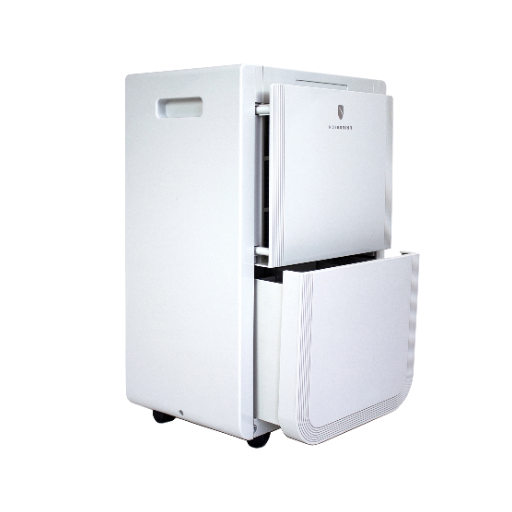
Routine Maintenance for Longevity
Ensuring that the crawl space dehumidifier lasts long and works well calls for the implementation of a structured maintenance protocol targeted at key operational points. Clean or change the air filter periodically according to the manufacturer’s guidelines. Harm can arise when airflow becomes restricted by a clogged filter (tariffing extrusion): the unit works less efficiently; even motor burnout becomes possible. Equally important is the inspection and cleaning of coils to limit dust or material accumulation, thus compromising heat exchange and leading to poor performance.
Monitoring the water collection system and draining it regularly is another routine maintenance operation. Empty the reservoir regularly to prevent overflow or bacterial formation. In case there is a pump or drain hose connected to the unit, it must be checked to ensure that drainage continues unobstructed. Inspection of the seals, electrical connections, and hoses for wear and tear is also an excellent way to preempt failure.
Finally, consider calibrating a unit’s humidity settings with a reliable hygrometer. Crawl space relative humidity levels ideally should be between 30% and 50% so as to prevent mold growth and wood rot. Keeping a record of maintenance activities and operational data will serve as a helpful analytical tool for the early recognition of trends or issues requiring professional servicing. Facility managers and homeowners alike can actually help to improve the performance of the dehumidifier and its operational lifespan through these detailed maintenance practices.
Monitoring Humidity Levels Effectively
To sufficiently measure and monitor the climate’s relative humidity, a precise and reliable hygrometer must be used. Digital hygrometers are usually favored because of their accuracy, straightforwardness in calibration, and ability to store past data for trend study. The device must be periodically calibrated to ensure reliable reading, as recommended by the instrument manufacturer. In the facility, measurement is best performed at various points, considering possible variations introduced by airflow, insulation disparities, or equipment operations.
Smart systems for humidity monitoring present a top solution for maintaining indoor conditions in their desired range. These real-time systems supply data and alerts straight to smartphones or centralized dashboards, allowing quick response should the levels shift beyond the set range. Most systems, therefore, rely on a Wi-Fi connection and are paired with a dehumidifier or an HVAC system so they can control autonomously-almost relegating the manual aspect to a slim margin. Yet another plus is the presence of analytics and reporting in contemporary systems, which allows one to evaluate environmental patterns and judge the success of the humidity control systems over time.
The outcome of monitoring needs to be studied with great diligence to identify episodes that occur frequently or infrequently but could signify some structural or environmental issues. For instance, high humidity levels almost all the time in certain locations may be indicative of water leaks, poor ventilation, or dysfunctional equipment. Therefore, the use of new-age monitoring-measuring technology paired with sound interpretations will ensure that stakeholders maintain conditions at optimum levels while preventing maintenance issues from arising. Operational cost, energy-saving, and long-term structural integrity of the establishment or residence are some of the benefits of this means of analysis.
When to Upgrade Your Commercial Dehumidifier
Upgrading a commercial dehumidifier is a must if the unit persistently fails to meet the required humidity control levels, which causes operational inefficiencies. Persistent problems with humidity in the form of a higher level of moisture, mold formation, or damage to inventory and equipment will signal that the capacity or the technology of the present dehumidifier cannot meet the demands of the facility. Also, older models consume way more energy than the newer energy-efficient ones with state-of-the-art monitoring systems. A cost-benefit analysis can often show repair costs and energy costs exceeding those for a new, efficient system.
Another one is the age of the installed dehumidifier. Depending on factor usage and how it has been maintained over time, most commercial dehumidifiers last from eight to twelve years. As time goes by, wear and tear from the use of key components can affect the performance and reliability of the machine. Energy-efficient technology combined with quieter operation and building of sensors and control systems able to automate moisture control are some of the latest improvements in dehumidification. Taking on an upgrade to a newer model with such features should give you a piece of mind, ensuring that it meets today’s operational standards and can keep at bay unexpected breakdowns and costly downtimes.
Lastly, changes in regulations or building requirements may dictate an upgrade of your dehumidification system. Energy efficiency standards are generally more stringent for newer models, which would translate to further reduced operating costs and a smaller carbon footprint. Also, in facilities for pharmaceuticals, food production, or high-precision manufacturing, tight environmental controls must be in place to protect product integrity. An upgrade for your commercial dehumidifier to one that is engineered for industry-specific requirements will guarantee the best performance and protect your operational results. Regular appraisal of what your equipment has in store against all current standards is the defining factor in keeping the operations well throughout their life span.
References
-
Energy-Efficient Management of Mechanical Ventilation and Relative Humidity in Hot-Humid Climates – Research on dehumidification and ventilation in hot-humid climates.
-
Optimizing Energy Efficiency and Improved Dehumidification Performance of Variable Capacity Air Conditioning Systems – A study on energy-efficient dehumidification systems, including crawl space considerations.
-
Closed Crawl Space Performance: Proof of Concept in the Production Builder Marketplace – Research on the performance of closed crawl spaces and their impact on moisture control.
Frequently Asked Questions (FAQ)
Q: What is a commercial dehumidifier for a crawl space?
A: A commercial dehumidifier for a crawl space is a specialized device designed to manage excess moisture and control humidity levels in crawl spaces, helping to prevent mold growth and structural damage.
Q: How does a crawl space dehumidifier work?
A: A crawl space dehumidifier works by drawing in moist air, cooling it to condense moisture on coils, and then collecting the water in a tank or draining it away through a pump and drain hose, thereby improving indoor air quality.
Q: What capacity do I need for a crawl space dehumidifier?
A: The capacity you need depends on the crawl space size and moisture levels. A unit rated for 180 ppd (pints per day) is effective for larger areas with high humidity, while smaller spaces may require a unit with lower moisture removal capacity.
Q: Can I install a commercial dehumidifier myself?
A: While some units are designed for easy installation, it is advisable to consult a professional for optimal setup, especially for units with a built-in pump or those requiring drainage.
Q: How energy efficient are commercial dehumidifiers?
A: Many commercial dehumidifiers are designed for energy efficiency, allowing for continuous operation without excessive energy usage, making them a cost-effective solution for humidity control in crawl spaces.
Q: What features should I look for in a dehumidifier with a pump?
A: Look for features such as a built-in pump for easy drainage, a high moisture removal capacity, a filter for healthy air, and a warranty that ensures durability and reliability.
Q: How does humidity control in a crawl space affect my home?
A: Proper humidity control in a crawl space helps to prevent mold growth, maintains the structural integrity of the home, and enhances the overall indoor air quality, contributing to a healthier living environment.
Q: What are the benefits of using a dehumidifier with a pump and drain?
A: A dehumidifier with a pump and drain allows for continuous moisture removal without the need for manual emptying, making it ideal for spaces with persistent high humidity and ensuring optimal performance.
Q: How often should I check the filter in my crawl space dehumidifier?
A: It is recommended to check the filter regularly, typically every few months, to ensure it remains clean and effective in maintaining healthy air quality and optimal dehumidification performance.

